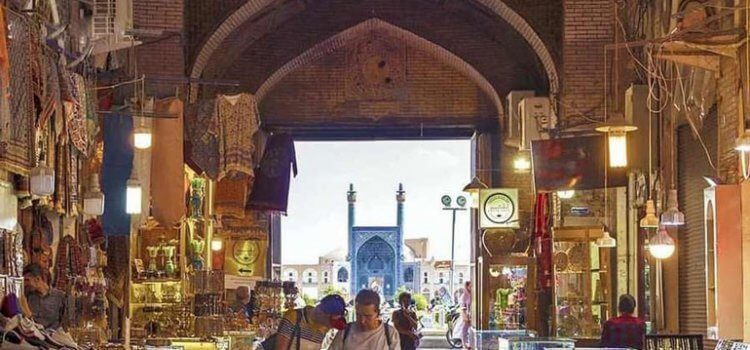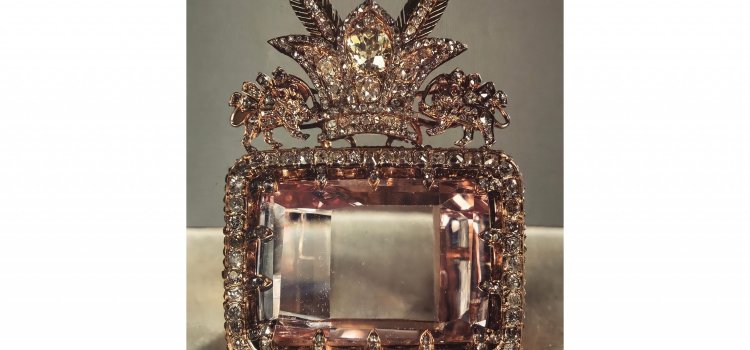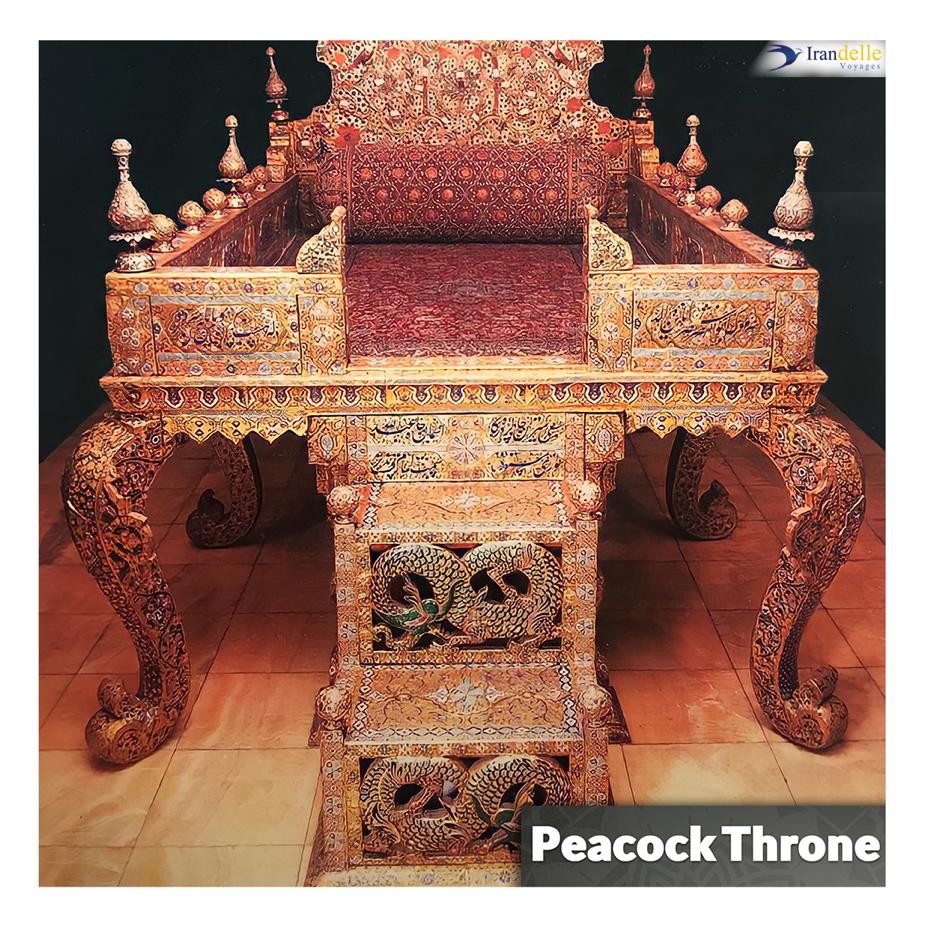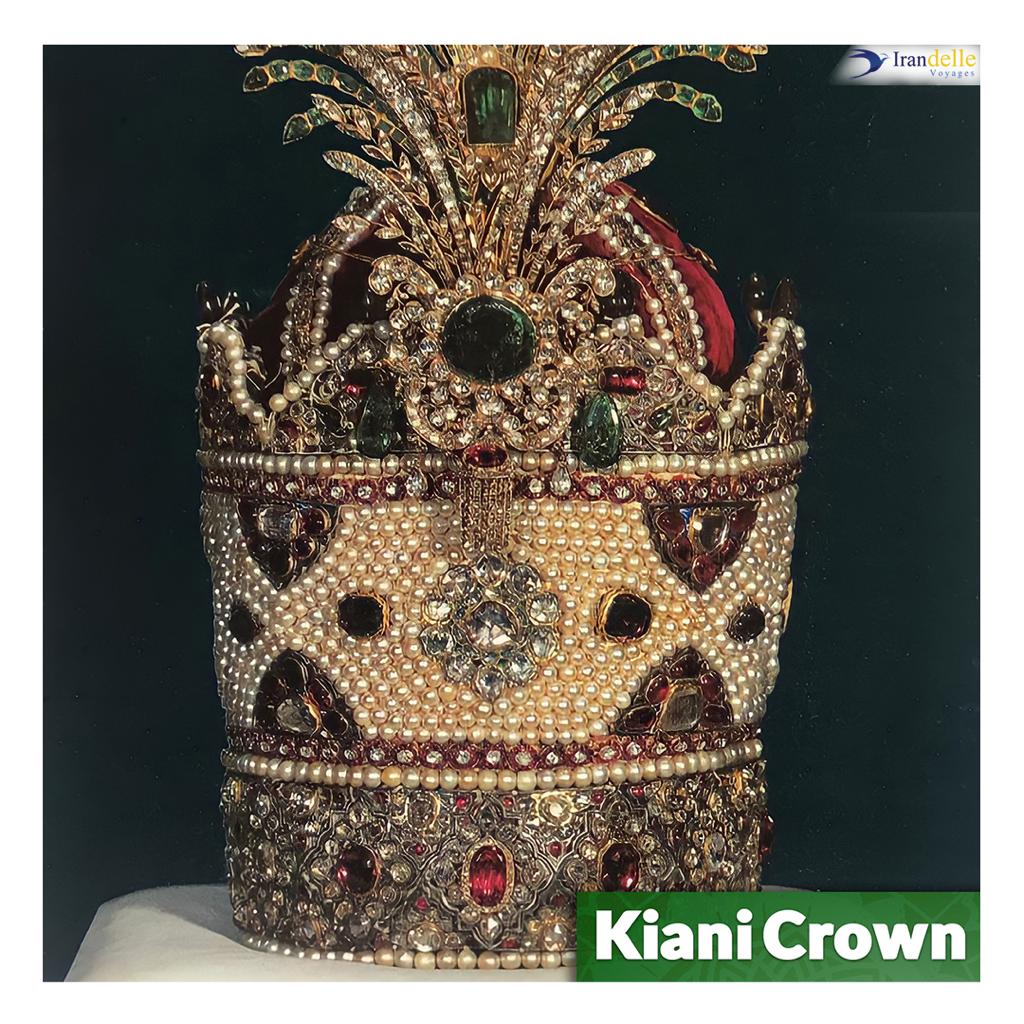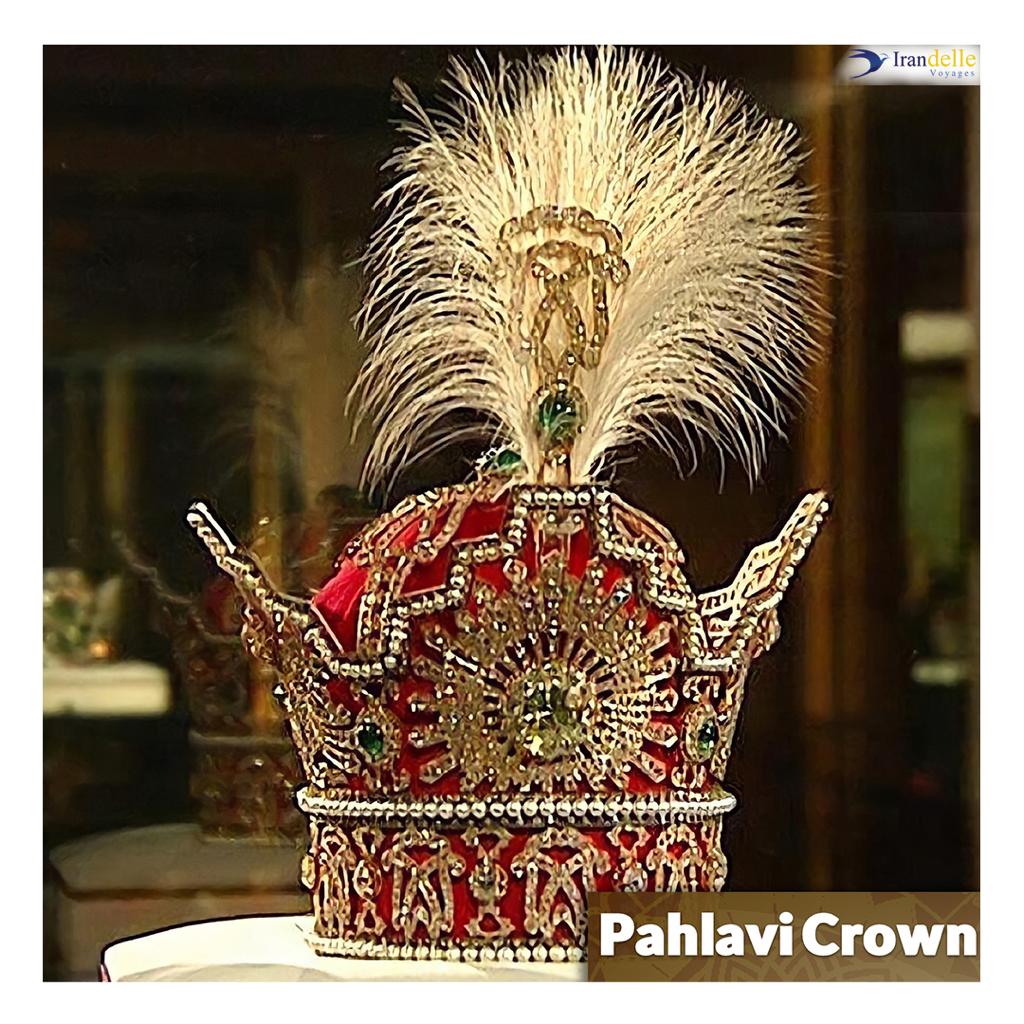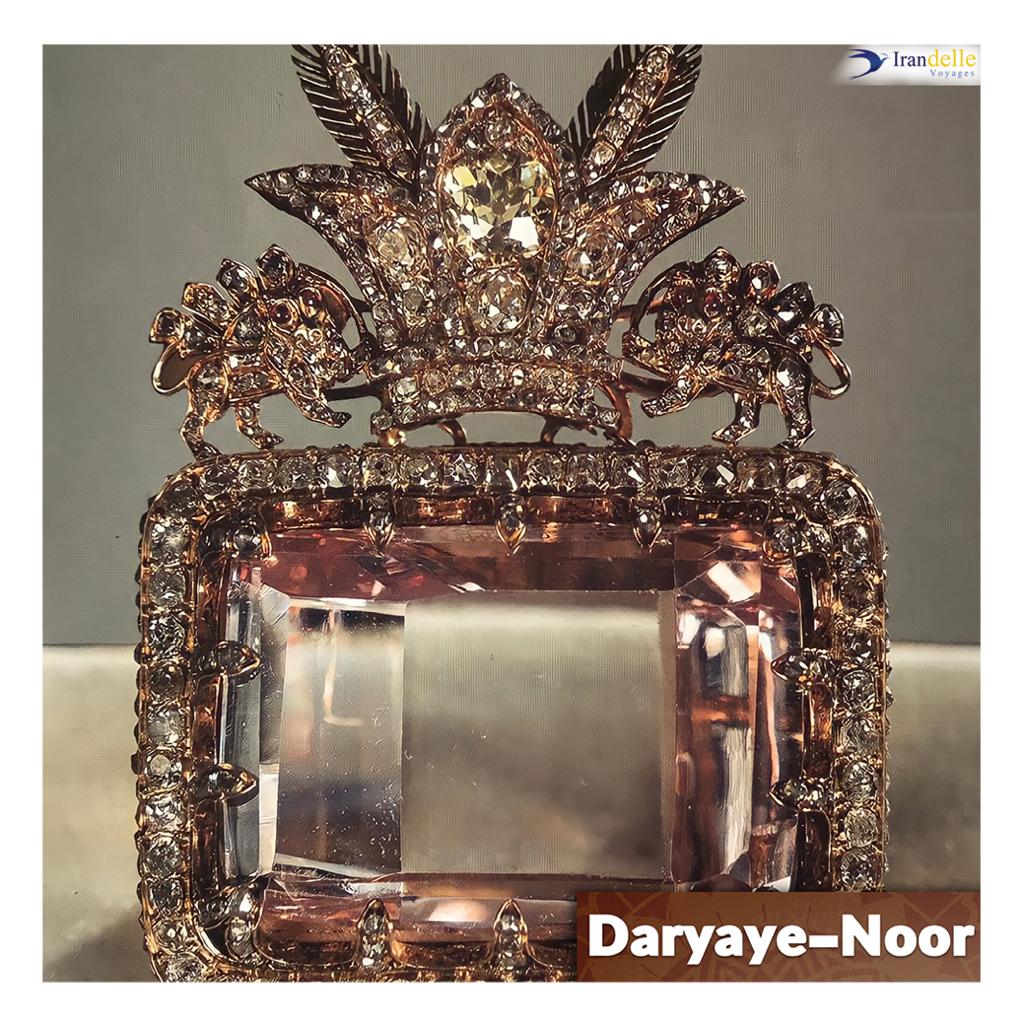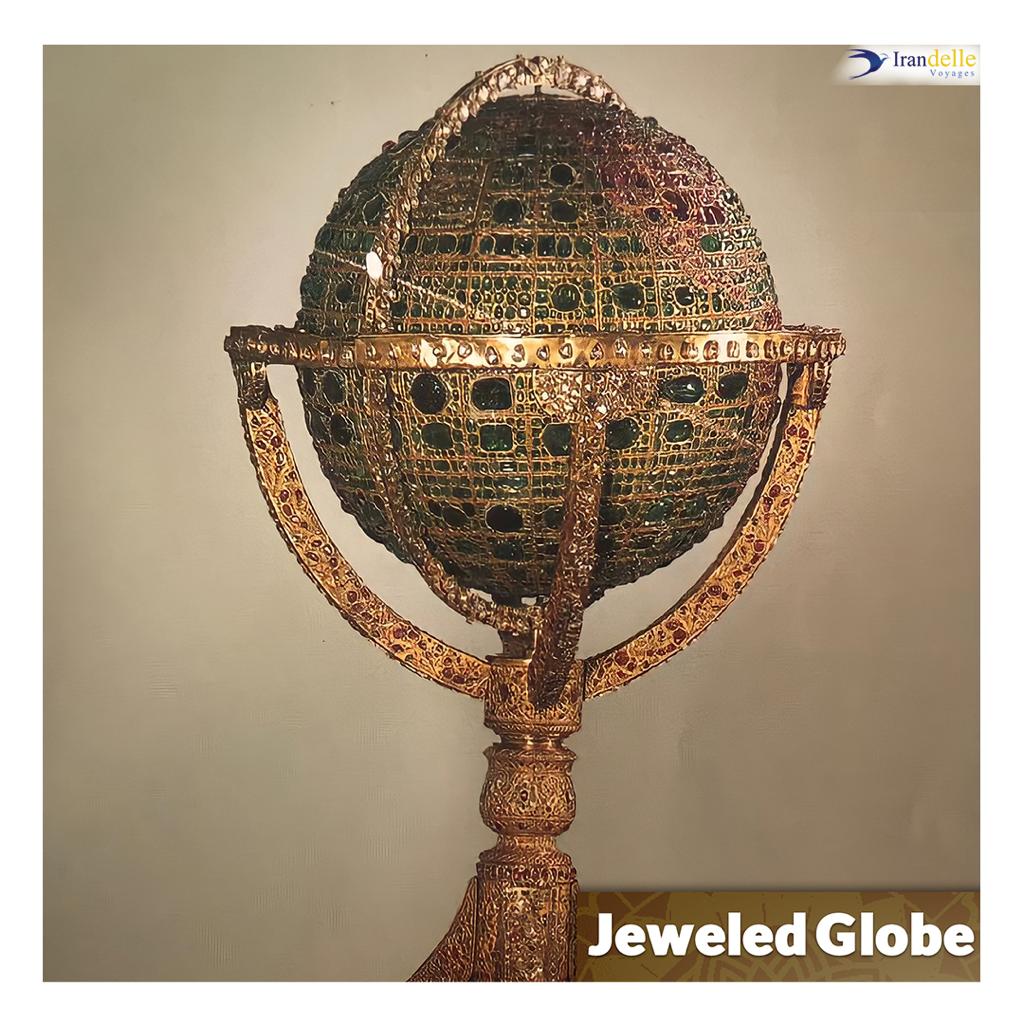Qeysarie Bazaar
Qeysarie Bazaar, also known as the Royal Bazaar or the Grand Bazaar of Isfahan, is located on the northern side of the Naghsh-e Jahan Square.
Qeysarie Bazaar, The Grand Bazaar of Isfahan
Qeysarie Bazaar, also known as the Royal Bazaar or the Grand Bazaar of Isfahan, is located on the northern side of the Naghsh-e Jahan Square. It is one of the first constructions built in the Naghsh-e Jahan Square, completed in 1605 AC.
The majestic entrance of the Qeysaie Bazaar (completed in 1617 AC) is decorated with eye-catching faience mosaic work. The spandrels are decorated with the image of a mythic creature: a being composed of a human head and a tiger body, shooting its dragon tail. Actually, the mythic symbol represents the ninth astrological, known as Sagittarius. Historians believe that Isfahan was founded in the ninth of the year, and that is why it appears on the spandrels at the top of the Qeysarie Gate.
In the middle of the portal, there are three frescos: the one on the west represents Shah Abbas hunting, the one in the middle shows Shah Abbas fighting the Uzbeks and the third one, on the east, demonstrates Europeans in the Safavid court. Below this frescos, there is a window which once was part of a Sharbat-sara (literally “syrup house”), where the king and his guests used to gather to drink and enjoy the eye-catching view of the Naghsh-e Jahan Square. Nowadays, this building has turned into a museum in which you can enjoy the works of modern Iranian artists. Also, it includes a tea-house, on the roof of the Bazaar, where you can sit, order a drink and enjoy the view of the square.
Flanking Qeysarie’s portal, there were two structures called Naqāreh-Khāneh (Timpani House), used to announce the time at dawn and sunset by playing trumpets and also timpani. Of these structures, there is no trace today.
The Qeysarie Bazaar itself includes a large number of roofed lanes, all lined with shops or hojrehs. At special intervals, usually four lanes meet and make a chahār-sūq. These chahār-sūqs are usually covered with a brick dome and function roughly as a crossroad or square, connecting different parts of the Qeysarie Bazaar together.
In addition to the main corridors, Qeysarie Bazaar is marked by different Saraas, Timchehs and Caravanserais which mostly hold workshops, storehouses and offices of some Bazaaris or merchants working in the bazaar. We strongly advise you to visit Timche Malek, a lavishly decorated Qajar-era building in the Bazaar.
All in all, the Qeysarie Bazaar makes an attraction which every traveler coming to Isfahan should make sure to visit. It is one of the biggest and most splendid bazaars in Iran, providing you with all types of Iran’s souvenirs. As you cross one lane, the fragrance of high-quality spices revitalizes your soul; another lane invites you to feast your eyes on the colorful designs of world-quality carpets; and in other lanes you will come across such beautiful handicrafts the examples of which you cannot find anywhere else in the world. Most important of all, the Qeysarie Bazaar is one of the best places where you can make connections with the local people and immerse yourself in the thousands-year-old culture of Isfahanian people.
Qeysarie Bazaar, also known as the Royal Bazaar or the Grand Bazaar of Isfahan, is located on the northern side of the Naghsh-e Jahan Square.
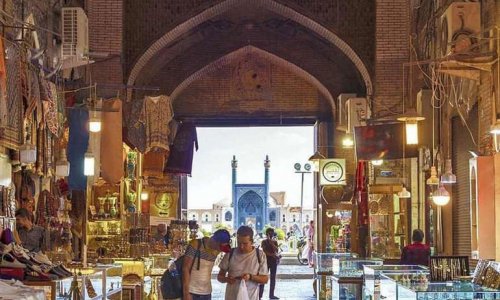
Bazaar
Stalls and shops lined up forming a spine, the economic center of cities in the Middle East. this has been called bazaar, since the dawn of time.
Bazaar
Stalls and shops lined up forming a spine, the economic center of cities in the Middle East. this has been called bazaar, since the dawn of time
A covered market, with a thousand and one entrances and alleys, airy and lighted. A setting that holds madrassas, caravanserais, schools and hammams. As it used to be a city inside a city.
A corridor where inhabitants meet, both merchants and customers.
A store, goods, there is as much food as diamonds.
Side by side, bakeries beside jewelry stores, each one to his own business,expertise and customers.
It wraps around the time and sets its course according to the currents and the surrounding environment..
The heirs are named after the parents, and the previous ones are remembered with nostalgia.
The bazaar has thousands of secrets and offers a chance to all beginners, with or without experience and money.
Don’t be surprised by the number of stalls, no competition problem, they all earn as the Omnipotent promises
The Royal treasury of Tehran
The Royal treasury, probably an unparalleled collection in the world is currently housed in the basement of the Iran Melli Bank.
The accumulation of this treasure dates back to the Safavid era in the 17th century. After the conquest of India by Nader Shah, …
The Royal treasury of Iran
The Royal treasury, probably an unparalleled collection in the world is currently housed in the basement of the Iran Melli Bank in Tehran. The accumulation of this treasure dates back to the Safavid era in the 17th century. After the conquest of India by Nader Shah, he brought back a great deal of precious stones including the two largest pink diamond in the world, sea of light and mount of light. The latter later possessed by british army and is now on the crown of the queen.
In the Qajar era, once again, Fath Ali shah took possession of it and the personal interest of the Qajar kings added quite a few new gems to it, which were partly bought and some counted among the diplomatic gifts.
In 1937 a law required that the treasury be transferred to the Melli (national) bank as the financial endowment of national currency.
The treasury has been prepared and opened to the public with very restricted visiting times.
Among the unique jewels, we can name
The crown of the Pahlavi Dynasty of 2080 grams, used by Reza and Mohammadreza Shah in their coronation ceremony. The famous diamond Daraye-Noor (sea of light) of 182 carats in pink color.
The Kiani crown, belonged to Fath Ali shah and other Qajar kings, set with a 120 carat garnet.
The jeweled globe, made in 1869 by the order of Nasserdin-shah was made basically with 3656 grams of gold with 51366 precious stones mounted on it.
The peacock throne (in Persian named Tawouss, beloved of Fath Ali Shah) dating from the beginning of the 19th century.
Note the visiting hours are from 2:00 p.m. to 4:30 p.m. Open Saturday through Tuesday under strict control.

